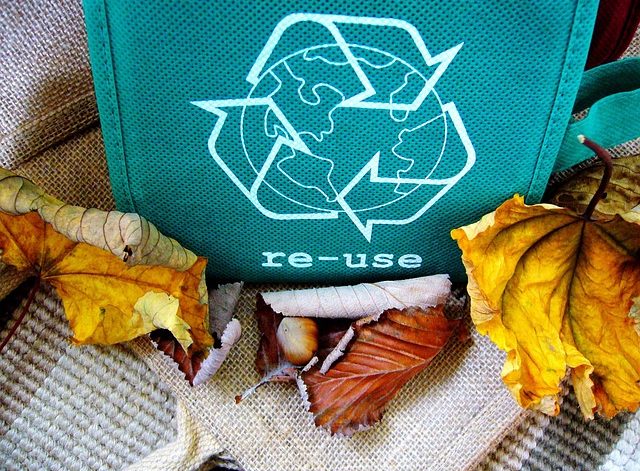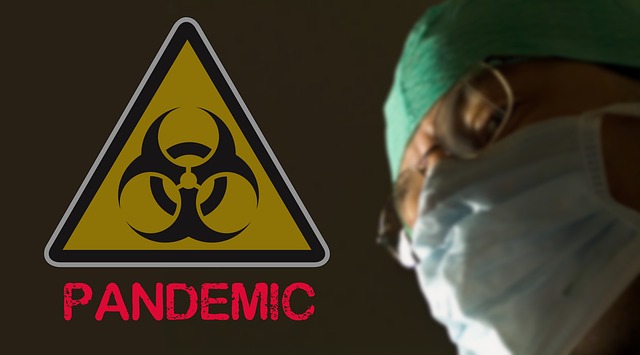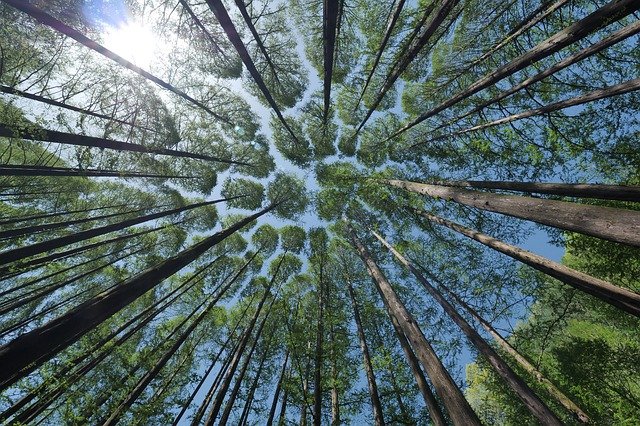INTRODUCTION: How and Why should we help our environment individually?
As the planet continues to deteriorate due to human activities and exploitation of its resources; it is very important that there be a reform in the global policies and increased calls for actions against climate change.
However, even at the individual and community level, the effort to reduce our carbon footprint and CO2 emissions must keep going on so that the effects of climate change in our immediate environment are not felt adversely in the long run.
You might also wish to check out this related article: 15 Easy Ways To Make Your Home Environmental Friendly/Green
Here is a compilation of 10 easy and practical ways to make your home more eco-friendly:
- Bee Bricks: Bees are crucial to our survival as they are responsible for pollinating more than 75% of all plants across the world- including a large variety of our fruits and vegetables. However, as bees become endangered due to harmful agricultural practices and other human activities that lead to their habitat destruction; Bee Brick is a great innovative and eco-friendly way of not only providing the bees with a shelter, but humans too. These Bee Bricks are essentially bricks with holes similar to a hive in them which can be used in construction of our buildings while also simultaneously serving rogue bees that are not part of a hive naturally. However, for the bricks to work, they must be located at least 1m high from the ground, properly cleaned to avoid mites, spread of disease and preferably plants that attract bees should be planted around in order to attract them for food (nectar).
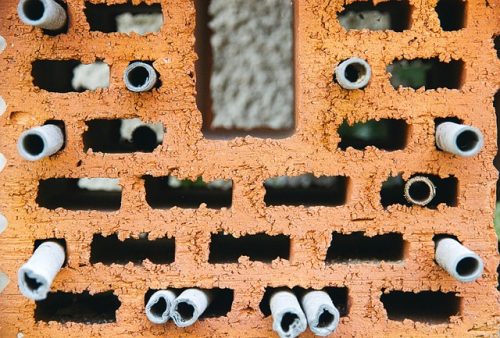
- Rooftop or Vertical Gardening: Also known as Urban Gardening. Instead of a garden or lawn occupying space Infront of houses, we can plant trees, greenery and other crops even on top of our commercial and residential buildings. This serves not only to reduce the land used by traditional gardens but also serves as a means of growing our own plants and food while saving space and making it more sustainable.
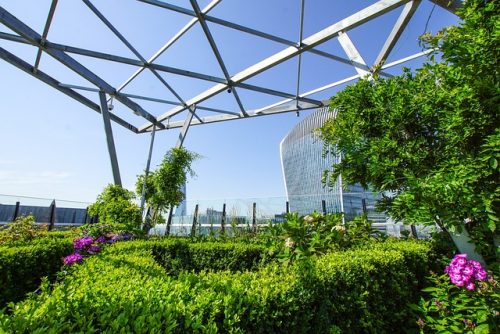
- Rainwater Harvesting: Rainwater is considered to be relatively safe and clean water. Therefore as water scarcity becomes a global problem, an efficient way to solve this problem is to capture rainwater instead of letting it runoff from our roofs and use it for domestic purposes or either store it in tanks or aquifers which redirects this water underground and replenishes the groundwater tables. For more info, read: 10 Easy Ways To Store And Use Rainwater In Your House
.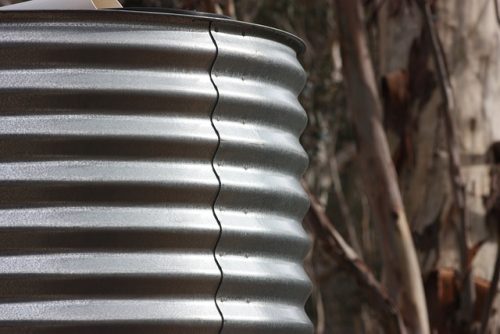
- Renewable Insulation Material: As normal insulation material is made from plastic which is obviously detrimental to the planet therefore a number of renewable insulation material have been developed that are ecofriendly such as: Roxul– a stone mineral wool insulation, insulation made of cellulose and hemp plant (the same plant used also to make Hempcrete; an alternative to concrete) and straw bales. The manufacturing process of these insulation is several times less energy intensive than regular insulation therefore better for the earth.
- Grey-Water Recycling: Approximately 6 liters of water are used to flush a single toilet. This system of gray water flushing is being used in newer buildings as part of water conservation efforts. This system vastly reduces the volume of water used for flushing as well as the sewage load. The water from drains, sinks and bathtubs etc. is known as greywater and it is filtered and chlorinated which is then used in these toilets. However, it is not fit for drinking. Also check out: 10 Easy and Practical Tips, Tricks and Ways to Save Water.
- Solar Lighting: It is the use of solar energy for outdoor lights and bulbs instead of electric or LED bulbs. It works quite similarly to a regular solar panel that stores solar energy during daylight and charges the battery that powers lights at night.
- Gardens Over Lawns: Lawns are areas around houses which are covered with grasses and short plants that are just for aesthetic purposes mostly. However, these are not beneficial to the environment as they use land that could be used sustainably. a much better approach is to plant gardens that not only allow one to grow fruits and vegetables but also a variety of plants that can serve to increase biodiversity by serving as habitats and regulate the temperature leading to healthier soils and cooler temperature. For more info: Modern Lawns Destroying Our Environment – Gardens Are Better
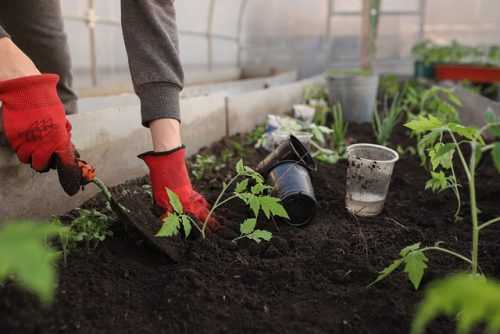
- Three Bin System: This system requires 3 bins to be placed side by side, each labelled and segregated into paper, plastic and metal. This is usually used in urban cities for easy sorting of trash and recovering reusable or recyclable items and ultimately reduce the burden on landfill sites conserve energy.
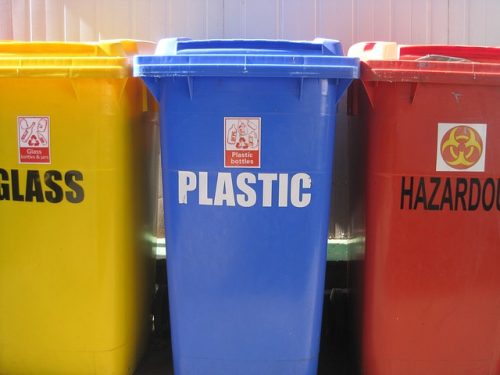
- Three Bin Composting System: this functions in a similar way to the regular 3 bin system with the difference being that this is used to collect compost instead. The three bins hold compostable material like yard waste, leaves, fruits, vegetable peels and other organic matter at different stages of decomposition. When one bin is filled, it is turned over into the second bin which allows foregoing manual aeration as flipping itself aerates the compost. Likewise, when the second bin is filled, it is turned over into the final bin where the compost will develop into the last stages and be ready for use on garden or plants. Also read: 10 Methods To Eradicate Solid Waste- Methods of Reducing Solid Waste. Composting itself is a very eco friendly and sustainable process which uses domestic kitchen waste and converts it into nutrient rich mulch that can be spread over plants or gardens.
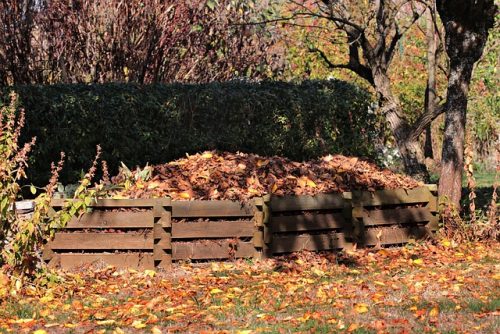
- Non-Toxic Cleaning Products: many cleaning products are a common cause of indoor pollution since these contain corrosive chemicals like HCL, Formaldehyde and other bleaching agents that can cause accidental exposure or ingestion and cause skin damage, throat or eye irritation etc. Some suggestions are to use compostable wipes for cleaning surfaces, gentle liquid cleaners and products with hydrogen peroxide as it can break down into oxygen and water in the environment which is relatively harmless and safer for humans and the environment to chlorine based bleach.
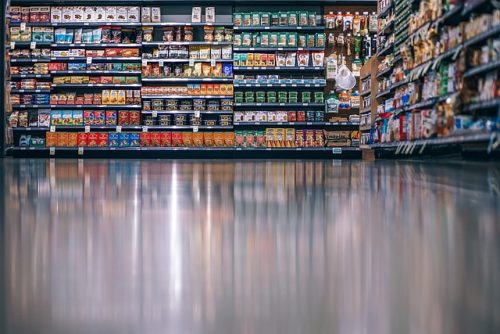
Also check out: 15 Easy and Practical Ways to Reduce Food Waste
CONCLUSION:
Eco-friendly products will significantly reduce the burden of the earth by reducing the waste generated, chemicals used and discharged in the waste streams, reduce the cost of waste treatment facilities which run on electricity and therefore generate emissions. All of these steps at a seemingly small scale contribute majorly to the environment and make it safer and healthier for all.
You may also be interested in,
10 Green, Eco-Friendly Inventions Helping Restore Ecosystems
10 Latest Innovative, Environment-Friendly Technologies
I hope you all liked this post! Please comment below if you have any suggestions, comments, or feedback! We at #envpk love hearing from our readers! Thanks!

